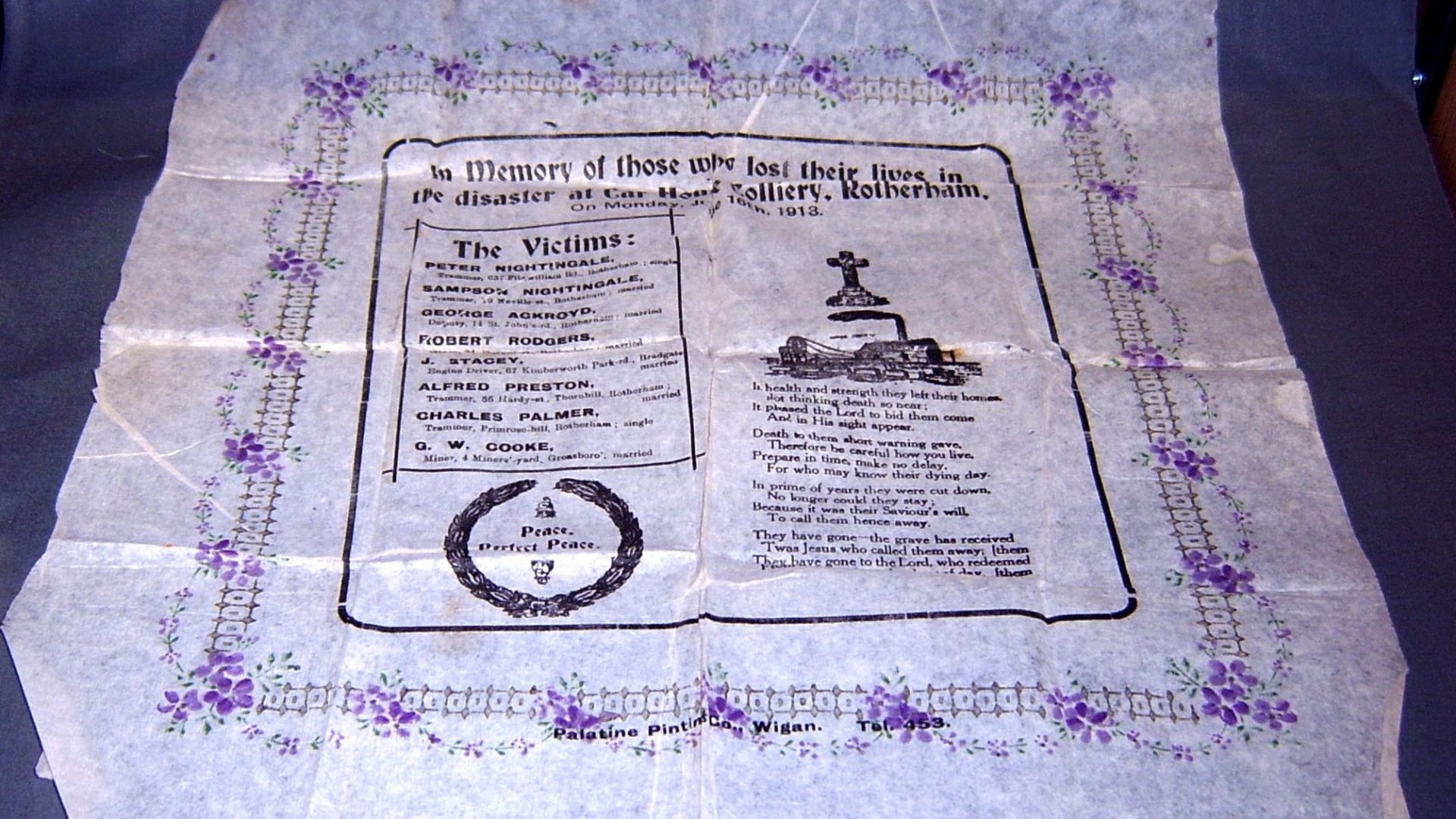Voices in the Coalshed: Serviette

What do you think of when you hear the word serviette?
Maybe like me your first thought is the household item serviette. I am picturing a napkin, usually a square of cloth or tissue used at the table when eating.
Did you know that the word is also used to describe a commemorative paper item that was printed to mark significant events? How do you feel about a ‘disaster’ being remembered on a household item?
The word serviette is a late 15th century word, from Old French, meaning ‘to serve’. It is believed in 1887 the British firm John Dickinson Ltd overprinted logos and other marketing-related information on top of serviettes, turning them into souvenirs. Soon after, commemorative serviettes were produced for notable events including Royal visits. They were sold, often to raise money for charities and would have been sold by street vendors.
Sadly, over time they were then used as a memorial of an event or person, sold to benefit the families of those caught up in disasters. They would have been priced so that most people could afford them, becoming sentimental items to remember those lost. Text on many described the objects as a “souvenir in affectionate remembrance”.
Want to discover more about commemorative serviettes? You can visit the Museum and see a commemorative serviette dedicated to the Pretoria Colliery Explosion in the main galleries or why not take a look at our online collections where you can view one dedicated to the men lost in the Wharncliffe Woodmoor disaster. https://www.ncm.org.uk/collections/wharncliffe-woodmoor-disaster-serviette/.
This week’s Voices in the Coalshed post was researched and written by Volunteer Tracy, who volunteers ‘remotely’ from home. If you would like to join Voices in the Coal Shed, please get in touch with voicesinthecoalshed@gmail.com